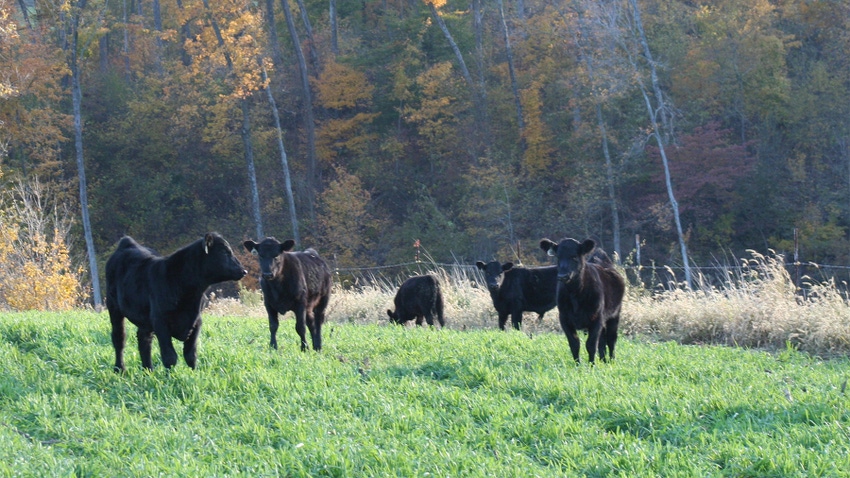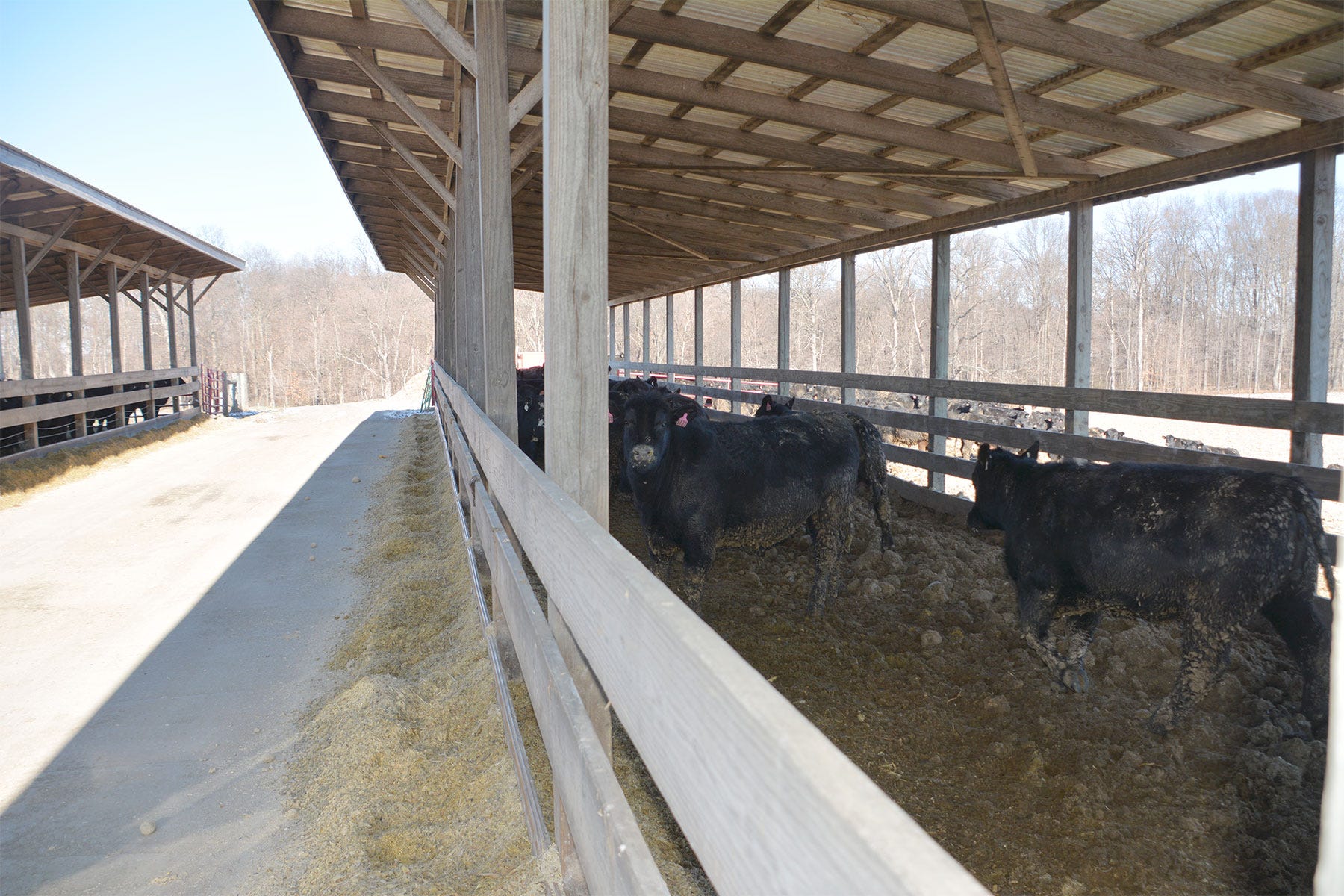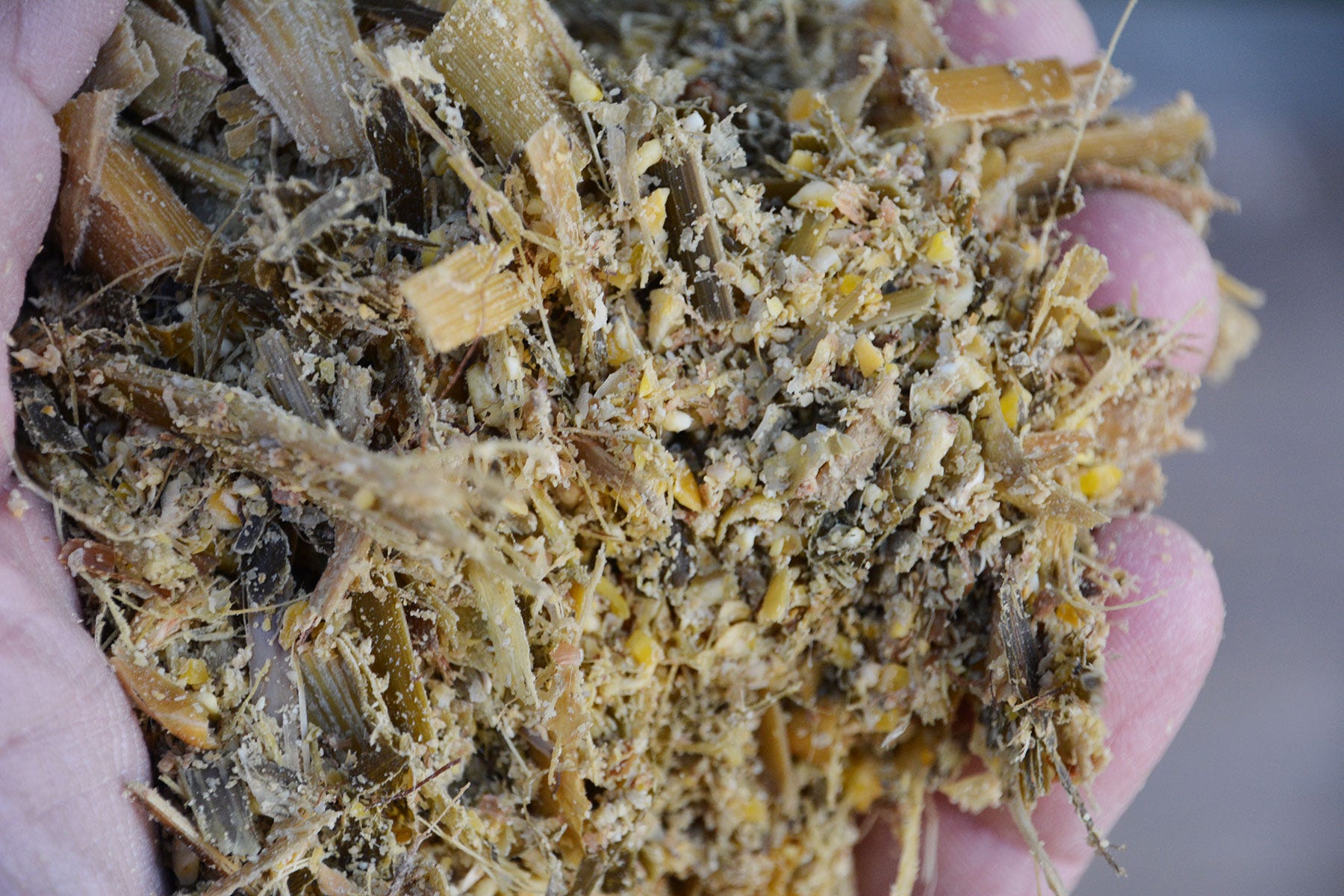
The rolling hills of Dubois County, Ind., make for scenic landscapes, especially in the spring and fall. Dave Fischer believes they also make an excellent backdrop for raising quality forages and producing high-quality meat. Fischer and his four employees manage a 450-cow beef herd while maximizing forage output on his farm near St. Anthony.
But when cattle are ready for market, they don’t go far. They supply meat for Fischer Farms, a 20-year-old business that Fischer and his wife, Diana, started from scratch. Based in St. Anthony in a facility built alongside another family business, Sander Meat Processing, Fischer Farms serves 150 restaurants, a dozen retailers, Indiana University dining halls and online customers.
“Our goal is offering high-quality beef with excellent marbling,” Fischer explains. “Genetics is a big part of it, but so is how cattle are fed. We utilize lots of forages because that’s what our land can grow well. Our biggest feedstuffs are annual ryegrass and corn silage.”
Producing forage
Annual ryegrass doubles as an excellent cover crop, Fischer says. The key to success with annual ryegrass is seeding it properly and on time, he adds.
Their goal is to seed annual ryegrass around Sept. 1 or even earlier. No-till drilling is the method of choice. Sometimes they no-till in fields where corn was just chopped for silage.
“If we get annual ryegrass planted by Sept. 1, we can typically start grazing by early November,” Fischer says. “We’re usually able to graze calves on annual ryegrass pasture most of the winter. Once it gets colder or fields get wet, we feed cows a mix of silage, haylage and supplement in small, roofed feeding areas we have at different locations.”
Fischer explains that they offer feed to cows on concrete pads running along the front of pens in feeding areas. They also feed cattle nearing market weight in similar facilities with a similar ration.

FENCE-LINE FEEDERS: Cows have access to shelter and feed in these facilities. They’re fed a mixture of haylage, corn silage and supplement on the concrete pads. (Tom J. Bechman)
“We prefer silage and haylage over hay because we’ve found that cattle fed silage as their main forage tend to marble better than cattle fed hay,” Fischer says. He can make those types of observations because he tracks marbling all the way to individual cuts, still tied back to individual animals, on the meat cutting floor.
Utilizing grazing
For those wondering how Fischer pastures calves on annual ryegrass during winter but cows that still have calves at their side eat silage and haylage instead, here’s the secret. “We set the electric fence at the right height so calves can get underneath it and go find pasture,” Fischer says. “The cows are too big to get under it. It separates them really well.”
Corn silage and haylage are stored in well-maintained and tightly packed bunker silos. Sometimes, Fischer alternates layers of corn silage and ryegrass haylage so it’s easier to feed a mixture when pulling silage out. However, at other times, it’s easier to store them separately and mix them as necessary when ready to feed.

QUALITY FEED: Dave Fischer pays attention to length of cut and other important factors to make sure this forage and supplement mix augments each animal’s needs. (Tom J. Bechman)
When everything is in sync, cattle also get some grazing time in the spring. To supplement summer forage needs, Fischer plants sudangrass hybrids in late spring to early summer.
“We’re really happy with annual ryegrass as a cover crop,” Fischer concludes. “Not only does it help meet forage needs, but it also helps build back the soil and capture carbon over time.”
About the Author(s)
You May Also Like




